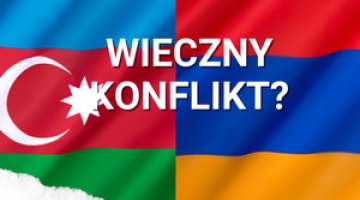Armenia on the verge of a revolution? Street protests continue despite the prime minister’s resignation
On 23 April, Prime Minister Serzh Sargsyan, the long-lasting and unquestioned leader of Armenia (he served as the country’s president in 2008–2018, and after Armenia’s political system was changed from presidential to parliamentary, most of the previous presidential prerogatives have been taken over by the head of the government) stepped down six days after taking office under pressure from street protests. The leader of the massive peaceful street demonstrations is Nikol Pashinyan, the head of the parliamentary faction of the opposition bloc Way Out (Yelk, holding 9 out of the 105 parliamentary seats). The dismissal of Sargsyan had been the main demand of the opposition, yet it did not end the protests. At present, the protesters are demanding that a ‘representative of the people’, i.e. Pashinyan, be elected (interim) prime minister. Karen Karapetyan (he served as the prime minister in the last period of Sargsyan’s presidency), who represents the governing Republican Party of Armenia (RPA), is also willing to act as prime minister. However, it is uncertain whether the government camp, in the broad meaning of the term, will fall apart and disintegrate (some of its representatives have joined the opposition; oligarch Gagik Tsarukyan, the leader of the Prosperous Armenia party (the second strongest force in parliament), has also backed the protests. The parliament is expected to elect the prime minister on 1 May.
The sides of the political conflict agree that a snap parliamentary election should be held. However, in the opinion of the opposition, it is necessary to remove representatives of the RPA from power before it takes place and to amend the election code because otherwise the present elite, using its control of the so-called administrative factor, will again guarantee electoral success to themselves contrary to the will of most of the public.
The situation in Armenia is being closely watched in Moscow – consultations with almost all the participants of the crisis are being conducted, amongst other measures. However, reactions from Russia have remained moderate so far, and its strategic interests do not seem to be at risk.
Commentary
- The recent developments are proof of the most serious crisis of the Armenian state and its institutions in two decades. The fall of Sargsyan, which means the end of his political career (he is still the president of the RPA, but many factors suggest that he will lose this position, as well), marks the end of the rule of the so-called ‘Karabakh clan’, the circles focused around politicians originating from Nagorno-Karabakh who played an essential role during the war in the early 1990s and then took the top state positions in the independent Armenia (Sargsyan led the Karabakh self-defence forces and had for many years served as Armenia’s minister of defence before taking the presidency). There are no more representatives of this group among leading politicians – neither in the government nor the opposition. Although Karen Karapetyan, who is currently the acting prime minister (he served as the prime minister in the last period of Sargsyan’s presidency) was born in Stepanakert, he moved to Yerevan as a child and lived and worked in Moscow for several years. He had no links to the army or any other law enforcement structure.
- It is still an open question as to whether the RPA, which has governed the country for two decades, will maintain unity and its previous influence. In the short term, this will depend on the outcome of Pashinyan’s talks with RPA’s representatives, and on the further determination of the protesters (these talks have so far been suspended). If Karen Karapetyan, who used to be Sargsyan’s rival inside the party and is now the leader of these circles, is elected prime minister, this would help the RPA remain united. In turn, the election of Pashinyan would add to the likelihood of the break-up and degradation of the RPA and, consequently, the disintegration of the political scene in its present shape. The behaviour of Gagik Tsarukyan may suggest that this scenario is possible. Tsarukyan is Armenia’s richest oligarch and the leader of the Prosperous Armenia (PA) party, which is the second strongest force in parliament (PA was nominally in the opposition but it backed the government during important votes; after Sargsyan’s dismissal it announced it would be joining the ‘hardcore’ opposition, and on 25 April it appealed to its supporters to join the protests).
- Nikol Pashinyan stands a significant chance of taking the position of interim prime minister. The leader of the protests (born in 1975, he worked for many years as a journalist) is known above all as an organiser of street actions; he has charisma which allows him to control the crowds. At the time of the presidential election in 2008, he was engaged in the campaign of the opposition candidate, Levon Ter-Petrosyan. Riots were sparked then (ten people were killed), and Pashinyan was sentenced to seven years in prison for organising large-scale disturbances. He was released from prison in 2011 as part of an amnesty. Pashinyan is capable of putting up armed resistance (in case the government camp opts for a violent scenario). However, it cannot be ruled out that he might fall into the trap of excessively long talks set by more experienced politicians from the government camp, and that the protesters will get tired of the demonstrations continuing for many days, and the protests will die down; this would offer the government camp room for manoeuvre (the crowds in the streets is currently the strongest card Pashinyan possesses).
- Moscow has taken a very cautious stance on the Armenian crisis. It seems that the resignation of Sargsyan and his possible replacement with Karapetyan might suit its interests (Karapetyan, who managed companies linked to Gazprom, has the reputation of being a politician who might be willing to take into account its interests to a higher degree than Sargsyan). It was only when it turned out that the prime minister’s resignation did not end the protests that Moscow began showing concern, one sign of which was its intensified activity in relations with Yerevan—the acting head of Armenia’s diplomacy, Eduard Nalbandyan, went to talks in Moscow on 25 April, and acting deputy prime minister Armen Gevorkyan did the same on 26 April. Furthermore, representatives of the Russian embassy in Yerevan met with Pashinyan on 25 April (he has also met with EU ambassadors), President Vladimir Putin had a telephone conversation with President Armen Sarkisyan, and Prime Minister Dmitri Medvedev called the acting prime minister Karapetyan. The degree of Armenia’s dependence on Russia in political, economic and military terms is very high. Therefore, an intensification of the pro-Western approach in Armenia’s foreign policy is rather unlikely, and any attempt of doing so would meet with a firm reaction (it cannot be ruled out that this would be used as a ‘green light’ from Moscow, allowing Azerbaijan to launch a limited military operation in Nagorno-Karabakh).
- The recent developments in Armenia have a direct impact on the country’s security situation, including the conflict over Nagorno-Karabakh. On the one hand, the dismissal of Sargsyan and the Karabakh clan means weakening the link between the governing elite and the quasi-state, which gives rise to strong concern there. On the other hand, this may result in creating an even stronger dependence for Armenia on Moscow and its assistance – unlike Sargsyan, neither Karapetyan nor Pashinyan have knowledge and experience in military and defence issues, and the constitutional amendments introduced to suit Sargsyan’s interests provide that the command of the armed forces is taken by the prime minister in case of war. It is unclear whether in this situation the army will manifest its own political ambitions, since Sargsyan was its patron (Armenian conscripts serve in Nagorno-Karabakh, for example). This scenario would become more likely were Azerbaijan to launch a military offensive, and Azerbaijan has been preparing for a military resolution of the conflict for years.
- The Armenian crisis has proven that the public in this country is an important (and today the key) subject of the local political scene. Protests have been seen on several occasions over the past few years, and the catalyst for the protests included rising electricity bills and territorial losses resulting from the Armenian-Azerbaijani clashes in Nagorno-Karabakh in April 2016. The fact that the current protests have not burned themselves out is linked to a generation change. Young people, who are predominant among the demonstrators, were born already in an independent Armenia, after the war in Nagorno-Karabakh was over. Therefore, they were not so receptive to the arguments that the protests are undermining the country’s defence capabilities and might provoke Azerbaijan to attack.





